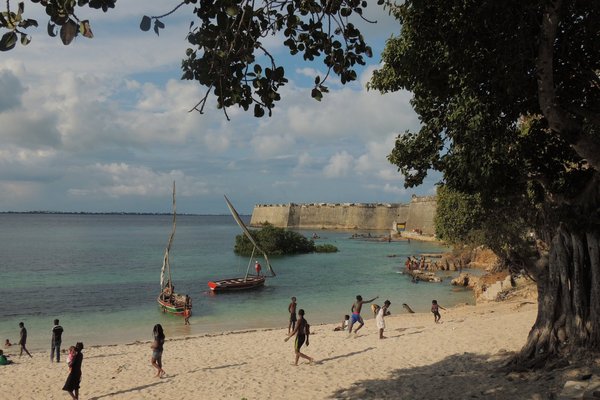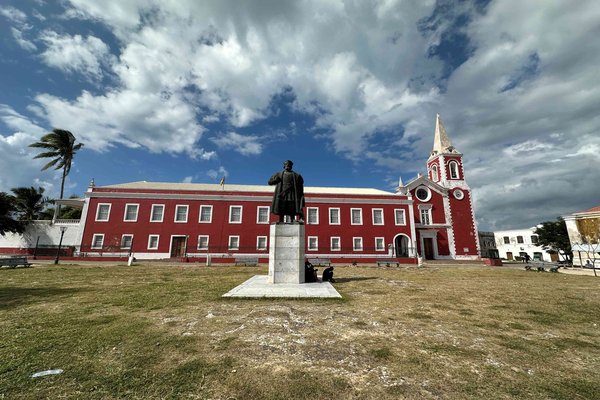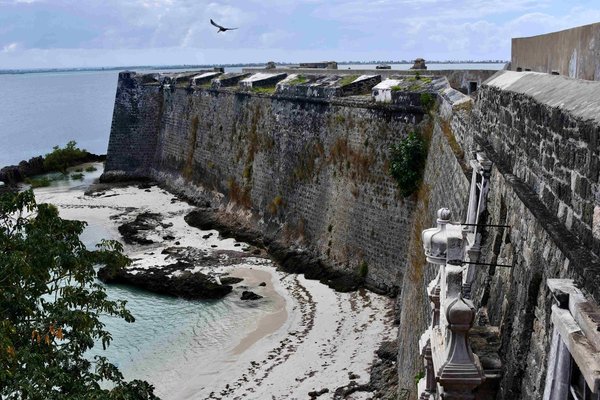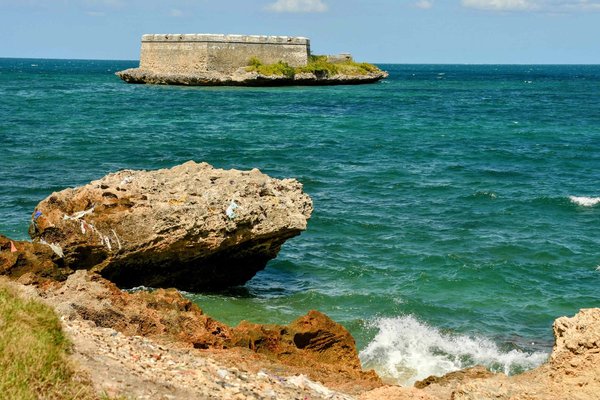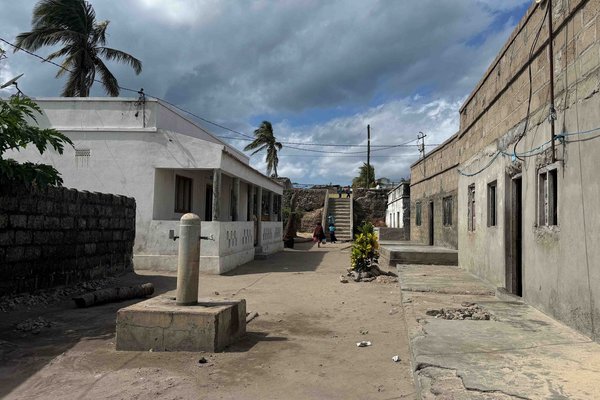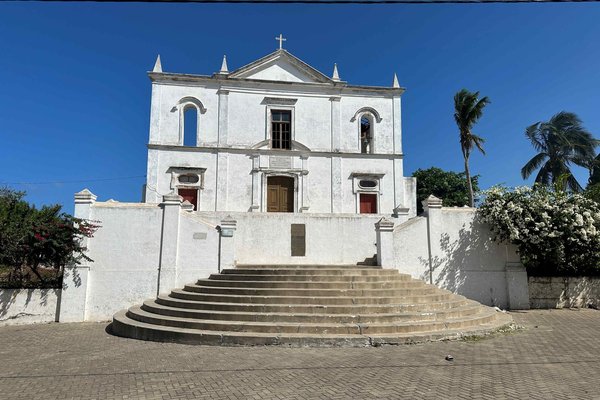Mozambique
Island of Mozambique
The Island of Mozambique was a trading post on the maritime route to India.
The towns on this Indian Ocean island show a mix of Arab, Indian and European influences, while also traditional African architecture has been preserved. Arab traders had settled here from the 10th century onwards, the Portuguese established a port and naval base as early as 1507 and left fortresses and churches. The site also comprises the neighbouring Sao Lorenco Island.
Community Perspective: “Natural beauty and incomprehensible squalor coexist side-by-side on this tiny island.” However, all reviewers seem to have enjoyed their stay and recommend visiting the fortress, the church, the governor’s palace and the neoclassical hospital.
Site Info
Official Information
- Full Name
- Island of Mozambique (ID: 599)
- Country
- Mozambique
- Status
-
Inscribed 1991
Site history
History of Island of Mozambique
- 1991: Inscribed
- Inscribed
- Type
- Cultural
- Criteria
- iv
- vi
Links
- UNESCO
- whc.unesco.org
- Related
-
- questconnect.org — Link
All Links
UNESCO.org
- whc.unesco.org — whc.unesco.org/
Related Resources
- questconnect.org — Link
Community Information
- Community Category
- Urban landscape: Maritime
Travel Information
Recent Connections
-
Perfect Inscriptions
1991 -
World Monuments Watch
Swahili Coast Heritage Sites, Comoros, … -
U.S. Ambassadors Fund
Restoration of the "Creche," an 18th-Ce…
Connections of Island of Mozambique
- Individual People
-
-
Mapped or Illustrated by Blaeu
On top frieze of Appendix Theatri A. Ortelii et Atlantis G. Mercatoris (1631)See luna.folger.edu
-
Vasco da Gama
Visited in 1498
-
- Geography
-
-
Indian Ocean
-
Swahili culture
mix of colonial Portuguese and old Swahili architecture
-
- Trivia
-
-
Built or owned by Portuguese
Fortress of Sao Sebastiao -
Cultural sites taking up an entire island
-
- History
-
-
Located in a Former Capital
Of Portuguese East Africa until c 1898
-
- Architecture
-
-
Manueline style
"The Chapel of Nossa Senhora de Baluarte..... Built by the Portuguese in 1522, the chapel is considered to be the oldest European building in the southern hemisphere. It is also considered to be one of the finest examples of Manueline vaulted architecture in Mozambique." -
Coral Masonry
-
- World Heritage Process
-
-
Perfect Inscriptions
1991 -
First inscriptions
Mozambique 1991
-
- Constructions
-
-
Hospitals
Holy House of Mercy - former hospital
-
- WHS on Other Lists
-
-
World Monuments Watch (past)
(1996), (2014) -
U.S. Ambassadors Fund
Restoration of the "Creche," an 18th-Century Landmark on Mozambique Island (2008), Preservation of Museum Collections on Ilha de Moçambique (2001); Preservation and Protection of Threatened Submerged and Terrestrial Cultural Heritage of the Global Slave Trade on Mozambique Island (2016) -
World Monuments Watch
Swahili Coast Heritage Sites, Comoros, Kenya, Mozambique, Tanzania (2025)See www.wmf.org
-
- Timeline
-
-
Built in the 16th century
Portuguese port since 1507, oldest extant fortress (St Sebastian, 1558-1620), other defensive buildings and numerous religious buildings (including many from the 16th century) (AB)
-
- WHS Names
-
-
Country named after them
The Portuguese gained control of the Island known in Swahili as "Msumbiji" in the 16th century and the westernised name became "Ilha de Mo?ambique" (Bradt gives an alternative version that it might have been derived from "Moussa ben Mbiki" the sheikh in control when da Gama first landed). The Portuguese East African Empire developed as a string of the possessions along the coast which were called by their individual names within what was genrally known as "Portuguese East Africa" but at first lacked any significant cohesion. in the 19th Century actual control was given to companies such as the Companhia de Mo?ambique (whose head office was in Lorenzo Marques) and Companhia do Niassa. However such central political control as existed was exercised from the Ilha which became the de facto capital and hence its name became accepted as representing the overall name of the entire area claimed by Portugal - even though in the late 19th century the "capital" was officially moved south to the flourishing city of Lorenzo Marques. In 1951 the colonies were combined into a single overseas province under the name Mo?ambique as an integral part of Portugal and this name was carried forward into the post colonial era.
-
News
No news.
Community Reviews
Show full reviews
Moçambique seems calmer now from the civil war and everlasting conflict, so we made room in our itinerary to come here.We flew AirLink from Johannesburg to Nampula. At arrival there was an administration fee for us at the immigration (650 MZN around €10 pp) and the process took about an hour.We had prearranged transport with B&B Jardim dos Aloés (it’s on booking.com) on the island. It was a three hour drive - nearly 200 km - to the island (6500 MZN - around €100 for both of us) - and the return is the same). The B&B resides in the core zone of Stone Town - the colonial part, it has only three very charming rooms and the very nice Italian host Bruno. He served a very nice breakfast where he tended and shared all his knowledge of the island, and he had taught his chef to bake Italian bread 🥯 The Island is connected to the mainland Ia a 3 1/2 km long single line bridge and it has distinct meeting spots so you can pass. It’s a necessity. It was built in 1967 by the Portuguese.Bruno organised every guided tour for us with the Amisse (+258 875107143). He had a kind of african-mohican appearance (shaved hair in both sides) and was very charming and nice.
The last thing we organised directly with him was a sunset cruise with a dhow (4000 MZN for the boat - around €65). It was late July (winter in this area) and he …
Keep reading 0 comments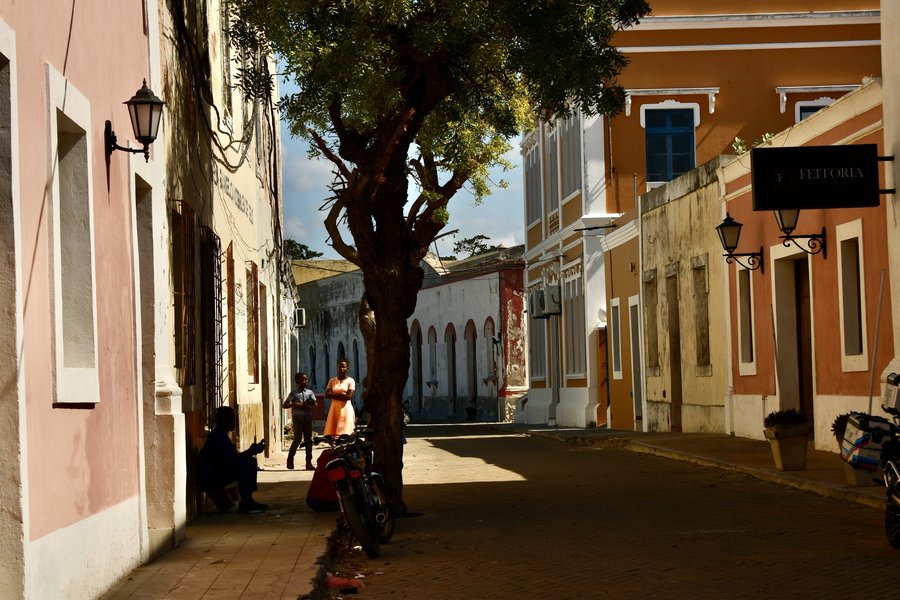
Visit July 2025.
Although listed as a UNESCO World Heritage Site since 1991, Ilha de Moçambique, just a few handful of members from the community have made it here.
We flew into Nampula from Johannesburg and made our way to the island. We stayed at Jardim dos Aloés, a beautifully restored 17th-century Portuguese house, now a charming guesthouse, owned by Bruno, an Italian. With its high ceilings, vintage details, and leafy courtyard, it was the perfect base for our time on the island.
The island itself is 3 km long and 500 m wide. The whole island make up the core zone. The island is roughly split in two: Stone Town, the historic colonial core, where the Portuguese elites once lived; and Macuti Town, where most of the local population still live today.
Stone Town
On our first day, we explored Stone Town with our guide, Amisse, who gave us a deeper understanding of the island. A highlight was the former Governor’s House, now a museum with a preserved collection of colonial-era furniture. Originally built by Jesuits and later taken over by the Portuguese, the building served as the capital’s governor’s residence. One room was even furnished for the King of Portugal — though he never came. The only person who ever slept in the royal bed was Mozambique’s first president, during a national tour. He later declared the building a museum — likely saving it from being looted during the civil war. The church’s altar …
Keep reading 0 comments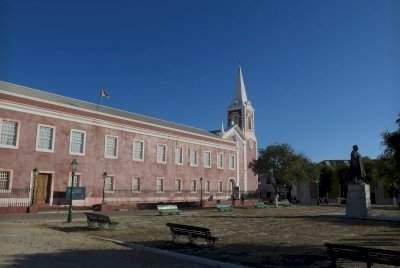
I had put the island on my TODO list for Mozambique but at the time I wasn't visiting for world heritage reasons. I actually went to Mozambique for scuba diving which is more interesting so a trip to Vilanculos and Tofo (WHALESHARKS!) is much more rewarding. As I was going to Malawi it made sense to fly via Nampula and the island of Mozambique isn't far off. Originally I had a hotel booked in Nampula and planned to do a daytrip but a hostel run by a Portuguese lady in another town had a friend on the island who ran on and it was cheaper and why not stay on the island you may think. Well, let's get into that soon. After arrival at the airport you can jump into a bus that goes to the island and it's super cheap. First stop will be the west side of town which is the shanty. I mean, poor, dirty, wondering how people survive. I actually got off here even though the driver said he'll take me to the end, the good part, but I felt I wanted to see the entire place a bit more. That is not recommended by the way so maybe just go to the end.
When you reach the good section the buildings look better and my hostel wasn't far off. It was more of a guest house actually, and the owner's partner would later drive me to the airport for a reasonable fee. Since I …
Keep reading 0 comments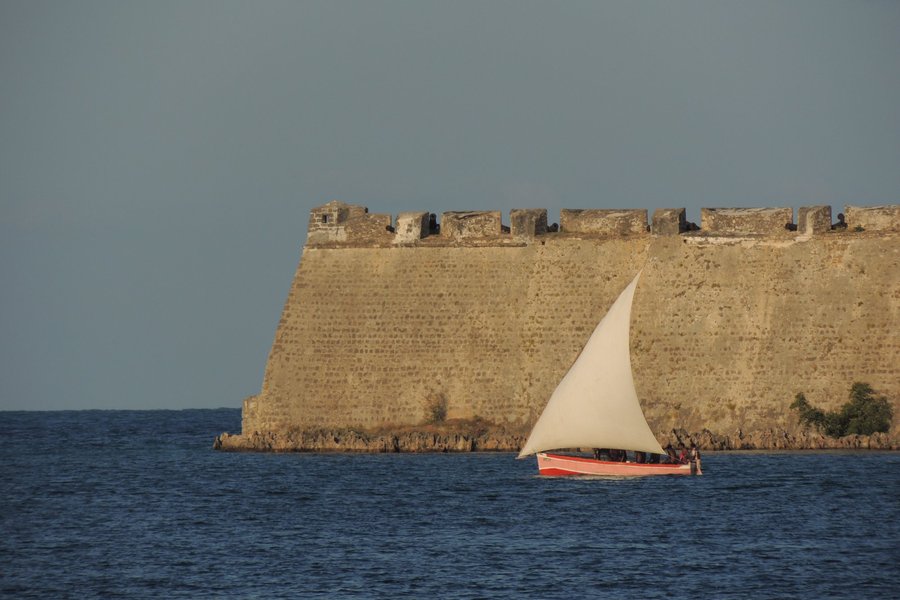
Monsoon winds have been blowing traders from India to Ilha de Moçambique (Island of Mozambique) since the 10th century. In the early 1500s Vasco de Gama arrived in Ilha and built a Portuguese fort out of blocks of the coral reef surrounding the island, claiming the territory for his nation.
After nearly 500 years of Portuguese rule, Mozambique gained its independence in 1975. The fort was used as a military barracks during Mozambique’s bloody civil war and later as a school. As the population on Ilha surged during the civil war, the fort fell into disrepair. Poverty-stricken Ilha residents searching for firewood found the window casings and wooden support beams of the fortress to be a cheap source of fuel. While wandering the streets of Ilha this August, we came upon a man using an axe to chip away at a large beam that clearly had come from the fortress. He reminded me that when people are hungry today, they can’t worry about preserving cultural treasures for tomorrow.
Like its fort, Ilha itself is truly a unique place to visit. Although Ilha is less than three kilometers long, it has a population of over 14,000 people. Natural beauty and incomprehensible squalor coexist side-by-side on this tiny island.
Most of the population on the island live in shanties made of sticks, straw, and the occasional piece of corrugated iron. While water is now piped onto the island, it is not sufficient to provide sanitation facilities to the island’s residents. Cholera outbreaks …
Keep reading 0 comments
I went to the island shortly after the war ended, so this review may be rather out of date. It was an unforgettable experience. I flew from Maputo to Nampula and drove in a battered taxi for three hours through the rain soaked jungle. It took three hours because of the huge craters from mines littering the road. I would say about 40% of the local people had injuries or were maimed from mines. The Island of Mozambique lies like a glittering pearl in an blue-green lagoon. It is reached via a single-track concrete pillared causeway built by the Portuguese in the sixties. During the war the population, migrating to the coast from inland, expanded from 3000 to 25000 in a few years, and the population continues to rise, placing unsustainable pressure on the scant resources of this tiny island. Water shortages are common, there is strepticocca all over the coral surrounding the island from unprocessed human effluent. This situation may well have improved since my visit, but the floods of a cuple of years ago cannot have improved the situation. The island itself is beyond comparison in the Indian Ocean. Zanzibar, Kilwa, Mombasa, even Lamu, cannot hold a candle to it in terms of historical importance, beauty, charm, variety... The 17th century Portuguese fort is magnificent, the baroque gateway carved from stone and white coral, and the old bronze cannon still there, rotting in their emplacements. The ancient chapel on the tip of the island being restored by a …
Keep reading 0 comments
